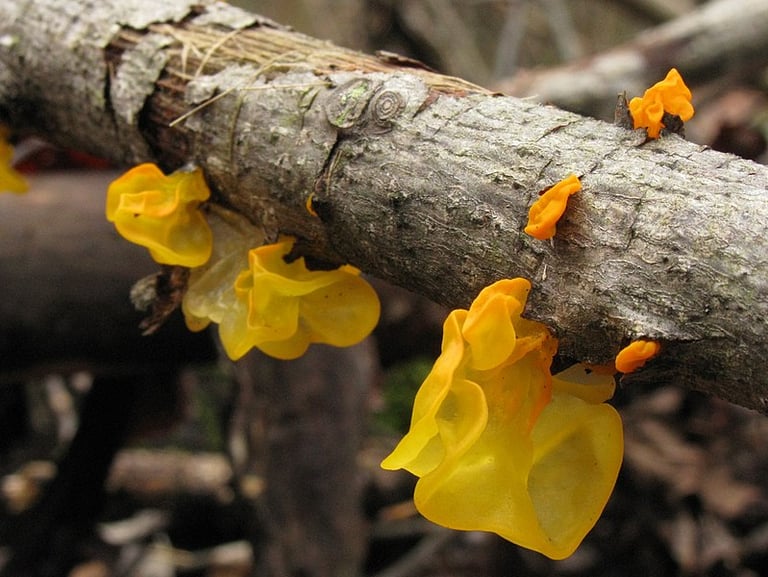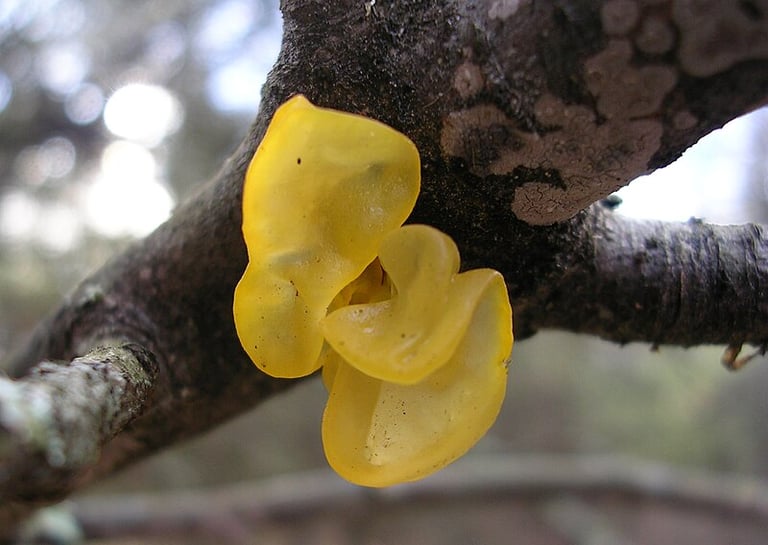Tremella Mesenterica


Image By Dan Molter
Tremella mesenterica, commonly known as Witch's Butter or Yellow Brain fungus, has been traditionally associated with various medicinal properties. While scientific research on its medical effects is limited, it is known for its potential benefits in certain areas.
1. Moisturizing and Skin Health: Tremella mesenterica contains high levels of polysaccharides, which have moisturizing properties. It is often used in skincare products and traditional Chinese medicine to promote skin health and hydration.
2. Antioxidant and Anti-inflammatory Properties: Some studies suggest that Tremella mesenterica has antioxidant and anti-inflammatory effects. These properties may help protect against oxidative stress and inflammation-related conditions.
3. Immune System Support: Tremella mesenterica is believed to support the immune system. It contains bioactive compounds that may enhance immune function and provide immune-modulating effects.
Regarding its ability to "cool down" a person, in traditional Chinese medicine, Tremella mesenterica is considered a "cooling" or "yin" tonic. It is believed to have cooling and nourishing properties that help balance excessive heat or dryness in the body. However, it's important to note that these traditional beliefs are based on cultural practices and may not have scientific evidence supporting them.
Description
Certainly! Here's a description of Tremella mesenterica based on its various characteristics:
1. Cap: Tremella mesenterica does not have a distinct cap like other mushrooms. Instead, it forms irregular lobes, folds, or brain-like structures. The color of the cap can range from bright yellow to orange-yellow or orange-brown. It has a gelatinous and rubbery texture.
2. Gill: Tremella mesenterica does not have gills. Instead, it lacks a defined underside and exhibits a convoluted, lobed, or folded structure.
3. Stem: Tremella mesenterica does not have a prominent stem like other mushrooms. It is typically attached directly to decaying wood or plant material. The part that connects to the substrate is usually thin and inconspicuous.
4. Spores: The spore color of Tremella mesenterica is typically white or pale yellow. However, the spores are not as significant for identification purposes since they are not produced in traditional gills or pores.
5. Habitat: Tremella mesenterica is commonly found on decaying wood, particularly hardwoods such as oaks and beeches. It has a preference for damp or wet environments and is often observed during the late fall and winter months. It can be seen in forests, woodland areas, and sometimes on fallen branches.







